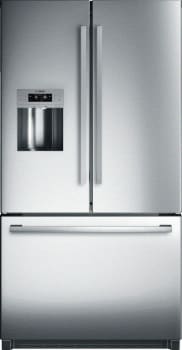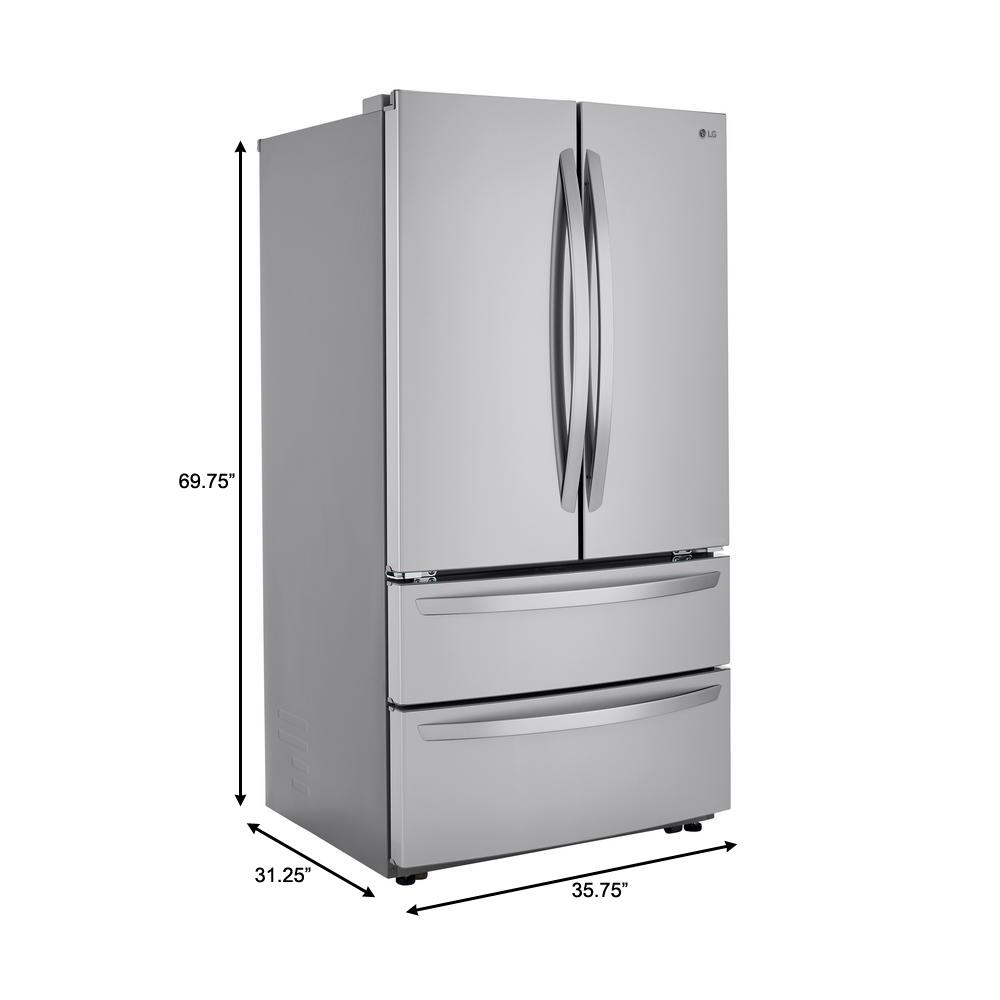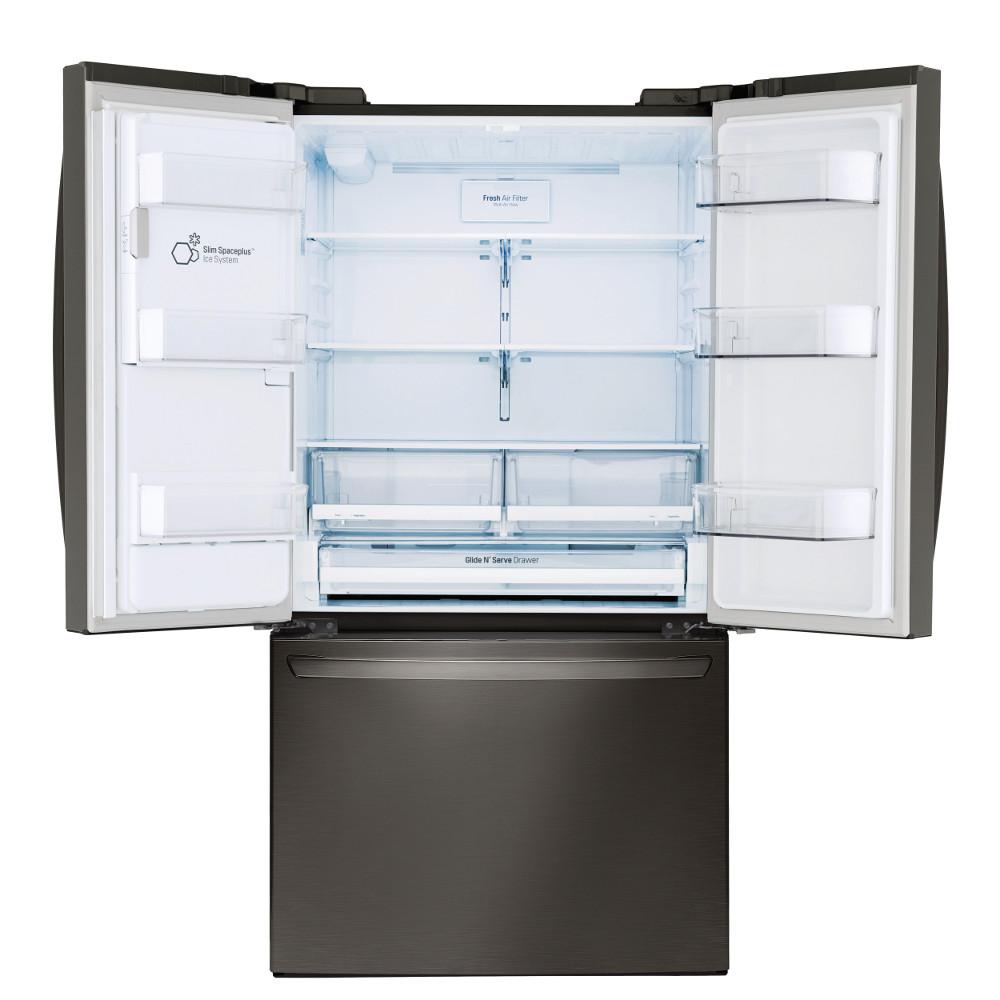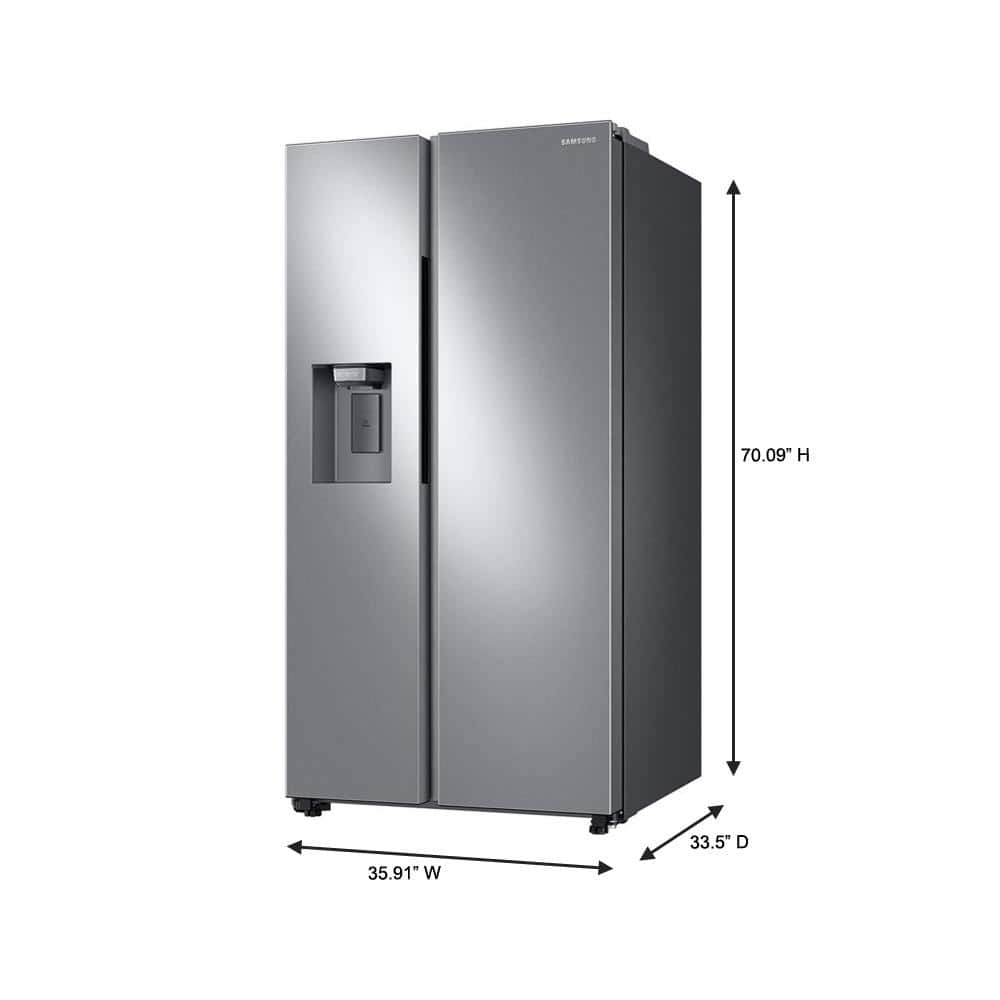Bosch B26FT50SNS 36 Inch French Door Refrigerator with MultiAirFlow™ Cooling System
36 Inch French Door Refrigerator with MultiAirFlow™ Cooling System, Quick Ice, NoFrost, SuperFreezing, SuperCooling, VitaFresh, Energy Star® Rated and 25 cu. ft. Capacity.
This 36 inch refrigerator from Bosch can cool, freeze, and create ice quickly. The SuperCooling and SuperFreezing functions cools and freezes items recently added quickly. These functions will return to normal functionality after 6 hours to prevent excess energy use. The quick ice can produce ice rapidly when in a pinch. The innovative VitaFresh crisper cooling technology will keep your fruits and vegetables fresh up to 3 times longer. The NoFrost technology means no more manual defrosting, your freezer will stay ice free. The fan-assisted MultiAirflow System causes gentle, even currents of cold air to emerge at all levels of the chilling and freezing area. Temperature fluctuations are minimized and cooling times reduced – which helps your foods retain their flavor for longer. The LED lighting will make all food easy to find with its bright illumination.
- Temperature fluctuations are minimized and cooling times reduced – which helps your foods retain their flavor for longer.
- Speeds up the ice making process when more ice is needed.
- Technology that lowers humidity in the appliance, which means that almost no ice forms.
- SuperFreezing protects frozen food from defrosting when adding new food to the freezer, and the new food freezes faster.
- When activated, food that’s just been purchased is cooled more quickly
- Innovative VitaFresh cooling technology keeps food fresh for up to three times longer.
- Energy Star® Qualified
- 25 cu. ft. Capacity
Additional information
| Refrigerator Capacity | 17.2 Cu. Ft. |
|---|---|
| Freezer Capacity | 7.8 Cu. Ft. |
| Total Capacity | 25 Cu. Ft. |
| Width | 35 5/8 Inch |
| Depth | 36 7/32 Inch |
| Depth with Door at 90° | 48 5/32 Inch |
| Height | 69 3/4 Inch |






by Donna
It is so nice to have a refrigerator that works. I love my new refrigerator
by Sofia
I love my new refrigerator. It is perfect. The ice and water is so convenient. I love the slide out drawer in the freezer. I keep it full of popsicles and cold glasses. My items are easily seen with the led lights. There is so much room for everything! My only regret is not purchasing this refrigerator sooner.
by Maggie
I had a Kitchenaid. It worked great for 27 years long years, but when it finally died my husband tried to talk me into a less expensive refrigerator, but my mind had been made up when I saw my neighbor’s. I was struck on the clean lines and her testimony. We bought our Bosch 800 series in March and I’ve never looked back… it keeps everything so nice and cold, everything easily accesable and I even like the ice and water dispenser which was a feature I didn’t really think I would need. I wouldn’t go back now. It is so handy. I love everything about my new Bosch!
by Grace
We updated our fridge and found out that we now have so much space in the same area with our new fridge, we didnt need to update our kitchen only the fridge! love it